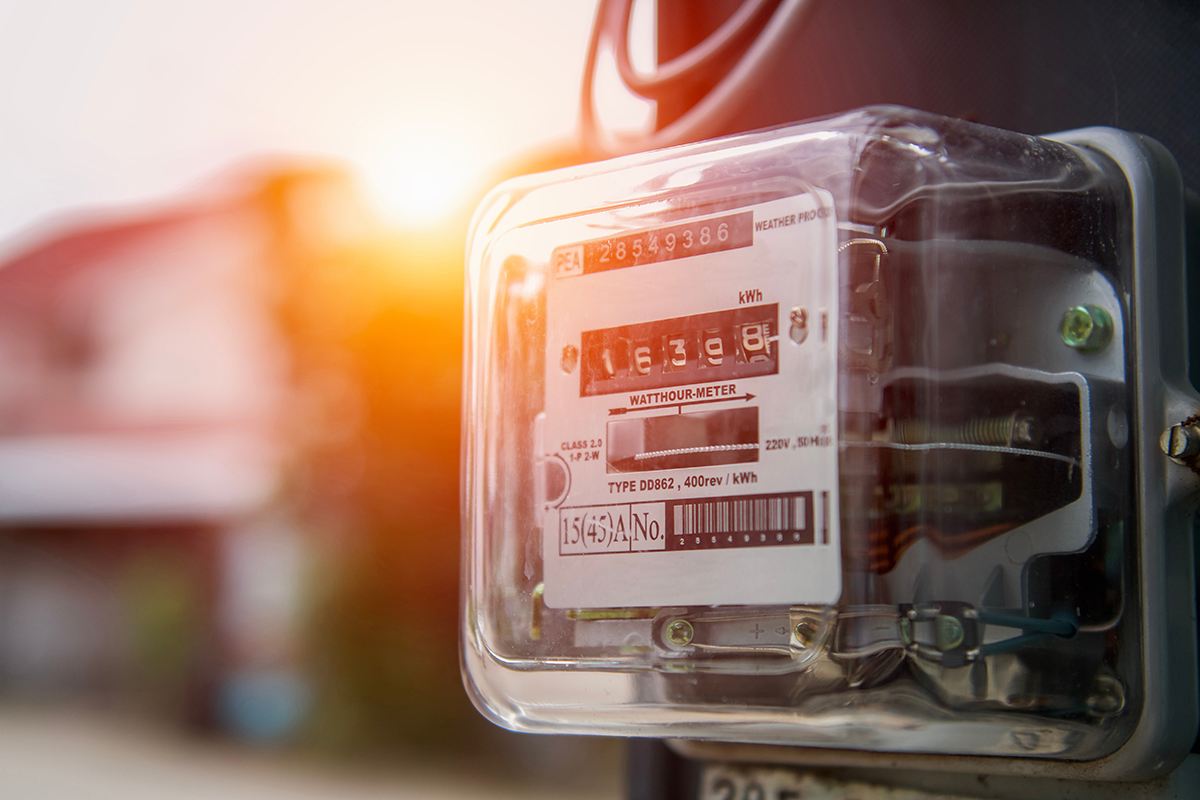
Barring an unusually high bill, most of us pay our utility bills and don’t think much else of it. What many of us don’t know is utility companies, already low margin businesses, need to be highly efficient in reading our utility meters every billing cycle in order to avoid unnecessary costs. This is where the meter-reading technology research from Maryland Smith comes in.
The research, published in Computer & Operations Research, is a collaboration between Bruce Golden, the France-Merrick Chair in Management Science, and Debdatta Sinha Roy, PhD ’19, now at Oracle, working with Christof Defryn of Maastricht University and Edward Wasil of American University.
“Previously, a person would drive by houses, get out of the vehicle and do manual meter reading,” Sinha Roy says. “This would require the driver to drive around all the streets where the houses are. It’s like package delivery.”
The introduction of RFID technology meant that meters were equipped with an RFID transmitter that continuously sends out signals within a range of approximately 500 feet. Whenever utility vehicles equipped with an RFID receiver would pass by, they would be able to read these signals automatically. In order to do this, utility companies need to find a route that passes within the range, or service area, of all the meters it needs to read.
“Using route optimization we can find the best or shortest route within the service area of all these meters,” Sinha Roy says. “However, with RFID, the signals are really discontinuous and the range is uncertain due to weather conditions, surrounding obstacles, interference and the decreasing battery life of the RFID transmitters.”
Because the RFID technology for meter reading is passive, signals are constantly transmitted from the meters. However, drivers aren’t able to check if data has been transmitted from a particular meter until after they return to the depot to transfer all the data to the computers. Missed meters could mean another vehicle needs to be deployed, resulting in additional costs for the utility company.
“In many cities and states, estimated billing is not allowed for two consecutive months,” Sinha Roy says. “Which means that if you missed a meter last month and you have already done estimated billing, you have to send out another driver to read the meter accurately if you again missed it in the current cycle. This may involve overtime payment, extra gas mileage and other overage costs.”
Golden and Sinha Roy focused on how to solve this problem using advanced techniques from machine learning and route optimization, capturing all of the uncertainties around RFID technology.
The researchers used machine learning to determine the probability that meters would be read considering how far a meter is from a particular street, how many signals a vehicle is expected to receive on a particular street and the number of RFID sources surrounding a specific meter. They tested their algorithms using actual meter reading data from Hartford, Conn., captured by the utility company Connecticut Natural Gas.
“Before using our model, we found that the utility company, on average, missed 5% to 10% of meters from their meter reading routes,” said Sinha Roy. “This meant that they had to send out a second vehicle to do manual meter readings of the missed meters leading to a total workload of more than 33 hours and unplanned costs.”
The research team used a hierarchical Bayesian model to determine the shortest route for the utility company to take, resulting in a workload of only 6-7 hours and less than 0.1% of meters being missed. The novelty of this research lies in bringing together route optimization and statistical learning. As new meter reading data is collected every cycle, the team is able to update the meter reading probabilities and the routes.
“Since solving this problem involves expertise in statistics, machine learning and optimization, it has been a very difficult problem to solve,” says Golden.
While Sinha Roy is confident that the team has solved this problem with the currently used technology, he acknowledged that meter reading has been a legacy problem.
“This is one of those legacy problems that keeps coming back to operations researchers,” Sinha Roy says. “I can now proudly say that we have solved the problem given the current technology, but it will come back to us in a different form based on how the infrastructure and capabilities of utility companies changes in the future.”
Read More: “Data-driven optimization and statistical modeling to improve meter reading for utility companies,” published in Computer & Operations Research.
Media Contact
Greg Muraski
Media Relations Manager
301-405-5283
301-892-0973 Mobile
gmuraski@umd.edu
Get Smith Brain Trust Delivered To Your Inbox Every Week
Business moves fast in the 21st century. Stay one step ahead with bite-sized business insights from the Smith School's world-class faculty.